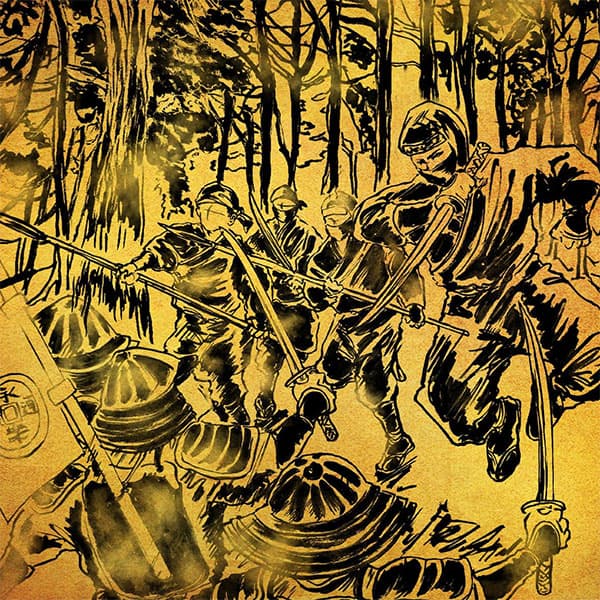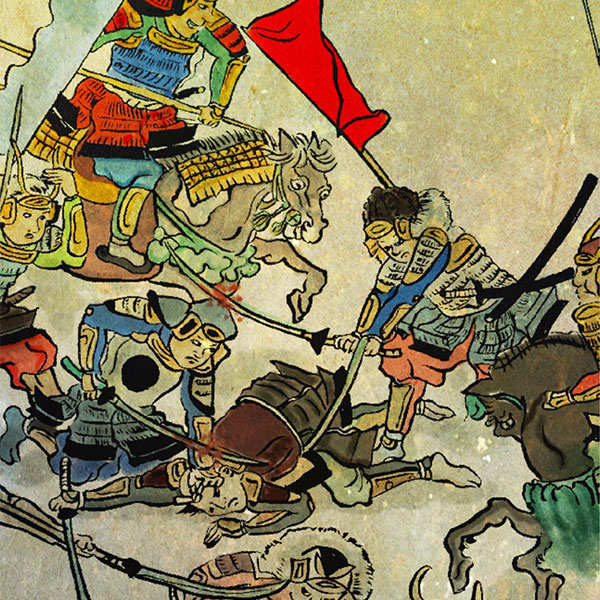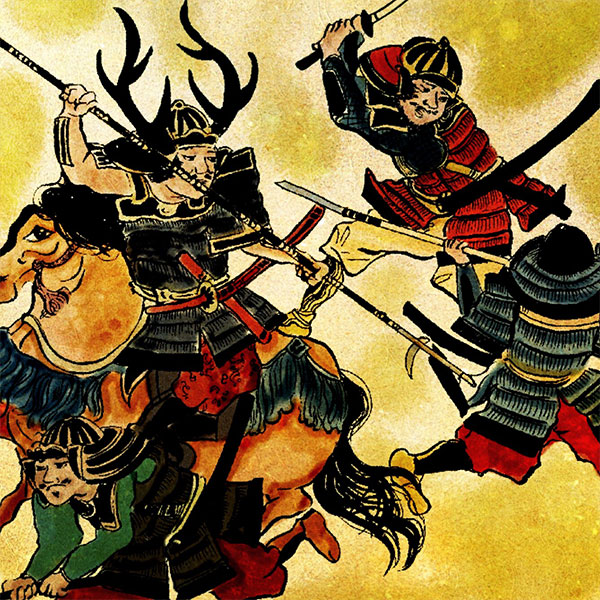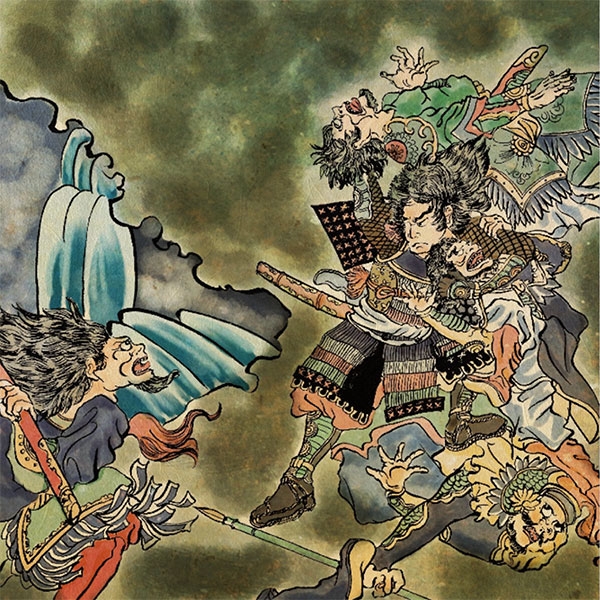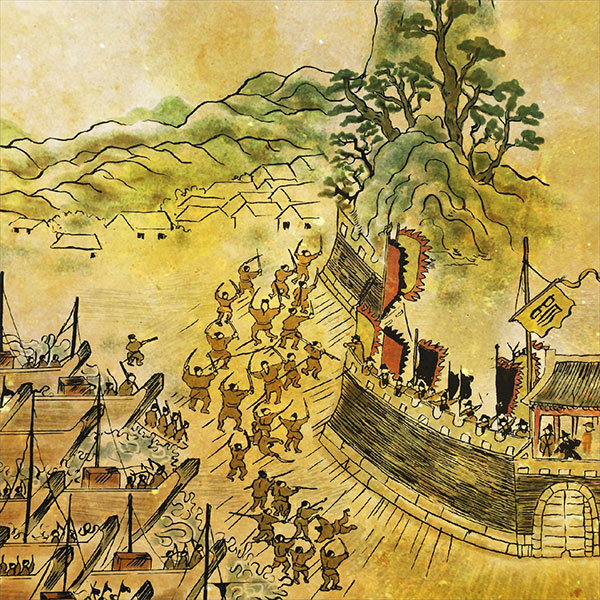Takatora Todo (2/2)A master of castle construction who served many lords.
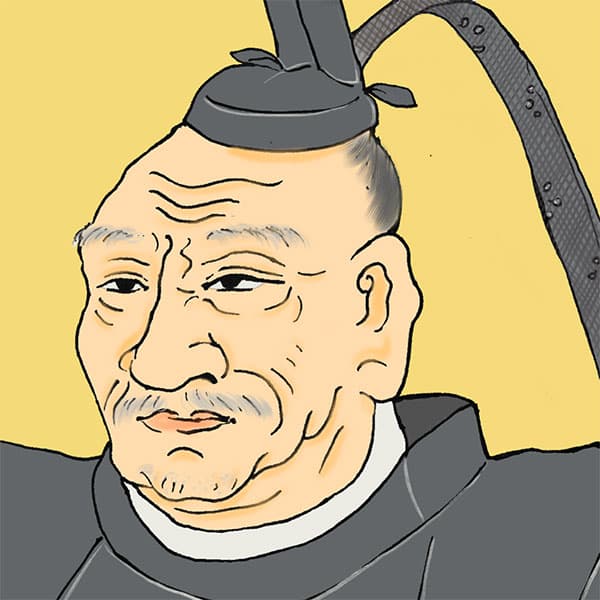
Takatora Todo
- Article category
- biography
- name
- Todo Takatora (1556-1630)
- place of birth
- Shiga Prefecture
- Related castles

Tsu Castle

Iga Ueno Castle

Uwajima Castle
Existing castle tower
Imabari Castle

Ozu Castle
- Naoyoshi Akai
- He was the son of Naomasa Akai, an influential nationalist in Tanba, and his common name was Akuemon, just like his father. After the Akai family was destroyed by Akechi Mitsuhide, he lived in seclusion in Kyoto, but in 1610, he began to serve Takatora as an ashigaru general.
- Yoshinari Kuwana
- The Kuwana clan was one of the three chief retainers of Motochika Chosokabe. Yoshinari was the castle lord of Nakamura Castle in Tosa. During the Battle of Sekigahara, the Chosokabe family that he had served was abducted and he became a ronin, but later he served the Todo family. In later years, during the Summer Campaign in Osaka, the Todo family fought a fierce battle with Morichika, the son of Motochika Chosokabe. It is said that Yoshinari died in the battle with his old master, or even committed suicide.
- Tatsucho Suga
- He led the Awaji navy and served various people, but was given territory in Iyo Province (Ehime Prefecture) as part of Toyotomi Hideyoshi's navy. At Sekigahara, the Suga family sided with the Western army, so they were forced to quit. Afterwards, he began to serve the Todo family, who were also feudal lords of Iyo.
- Ryo Watanabe
- He was born in Asai District, Omi Province, and like Takatora, he rose to fame through changing masters. When he was serving Mr. Hajime Nakamura, he was so highly regarded by Toyotomi Hideyoshi that he said, ``Even if you throw away 10,000 koku, you should keep it.'' During the Battle of Sekigahara, he served Nagamori Masuda, one of the five magistrates of the Toyotomi family. After the Masuda family sided with the Western army, he served the Todo family for 20,000 koku after the Battle of Sekigahara.
As I have already explained, this was a time when you could choose the master you served depending on your ability. However, under Takatora, he employs many former daimyo and former chief retainers. At that time, it was probably because Takatora was highly regarded by the public that he was able to keep him as a servant.
A quarrel with the military commanders who welcomed us
However, there is a continuation of the story for Tatsucho Suga and Ryo Watanabe in Osaka's winter camp and summer camp.
First, Tatsucho Suga. It is well known that after the Winter Siege ended with a temporary truce between the Tokugawa and Toyotomi families, the Tokugawa side filled in the outer and inner moats of Osaka Castle in an attempt to gain an advantage in the next battle.
At this time, Tatsunaga Suga was ordered by Takatora to fill in the moat of Osaka Castle, but he refused this order. He was originally a daimyo of the Toyotomi family, so he may have been dissatisfied with his orders.
Takatora, who had just come to inspect the site, criticizes his attitude and an argument ensues... In the end, Tatsucho Suga was ordered to commit seppuku on the spot for violating the order.
Ryo Watanabe ignored Takatora's orders in the Battle of Yao during the Summer Campaign in Osaka, acting on his own initiative and fighting from beginning to end. Although Ryo Watanabe gained the upper hand in the battle due to his efforts, Ryo Watanabe suffered significant damage and ran away from the Todo family after the battle. However, in response to Ryo Watanabe's actions, Takatora issued a ban on the ronin ("I have a grudge against the ronin that the daimyo family has named, so I will not hire other daimyos"), and the ronin was banned for the rest of his life. I couldn't solve it. As a result, Ryo Watanabe, who was highly regarded by the public, was unable to serve other families and passed away.
Takatora was a man who had a strong sense of duty towards others and respected his servants. However, on the other hand, he rose through the ranks to become a daimyo, and seems to have valued orders and order as an organization (daimyo family).
Why did Takatora join Tokugawa Ieyasu?
Toyotomi Hideyoshi, who elevated Todo Takatora to the status of daimyo, passed away in 1598. He served Hidenaga Hashiba in 1576, so he served the Toyotomi family for 22 years until Hideyoshi died.
However, after Hideyoshi's death, Takatora rapidly became closer to Tokugawa Ieyasu. Up until then, they had had some contact at banquets held by the Toyotomi family for Ieyasu, but their relationship was not that close. Nevertheless, why did Takatora approach Ieyasu?
This was probably because he had determined that ``Tokugawa Ieyasu would be the next to take over the country.'' It can be said that Takatora made a big decision based on his sense of self as a man who had risen to the top on his own, and his experience of changing his position frequently in search of a lord he could accept.
At the Battle of Sekigahara in 1600, Takatora fought against Yoshitsugu Otani and others on the front lines of the Tokugawa side (Eastern Army). However, before this battle began, he arranged for the enemy military commanders of Mitsunari Ishida (Western Army), including Suketada Ogawa, Mototsuna Kuchiki, and Naoyasu Akaza, to defect during the battle. In the end, in addition to these three, Hideaki Kobayakawa and Yasuharu Wakisaka betrayed the Western Army, which greatly influenced the outcome of the Battle of Sekigahara. Looking at these results, it can be said that Takatora's achievements were great.
After this battle, Takatora received an additional 120,000 koku of Imabari Castle in addition to the 80,000 koku of Uwajima Castle, and was able to control half of Iyo.
In 1608, with the reform of Sadatsugu Tsutsui, the lord of Iga Ueno, and the transfer of Nobutaka Tomita, lord of Isetsu, to the Iyo Uwajima domain, the area around Imabari Castle became an enclave of 20,000 koku in Ochi District. 100,000 koku in Iga, and 100,000 koku in Ise Anno District and Ichishi District, increasing the total to 220,000 koku, making him the lord of Tsu Domain. Iga and Tsu are important places along the Tokaido road that connects Edo and Kamigata. Tokugawa Ieyasu left this important position to the newcomer Takatora.
Ieyasu, who trusted Takatora so much, came to treat him as a fudai daimyo kaku (bekkaku fudai), just like the old vassals of the Tokugawa family. He was treated so kindly that when Ieyasu was dying, he even attended to his bedside and consulted with him about what to do after his death.
Takatora's end and afterward
Even after the death of Tokugawa Ieyasu, Todo Takatora remained loyal to the Tokugawa shogunate, and died at the Todo domain residence in Edo on October 5, 1630, during the era of the third shogun Tokugawa Iemitsu. He passed away at the age of 75.
After Takatora's death, Kinnen removes Takatora's bedding to cleanse his body and is shocked when he sees Takatora's body. His body was covered in bullet and spear wounds, his right ring finger and little finger were torn off, and his left middle finger was short and had no nails. It is said that his left big toe also had no nails, and his body was covered in wounds. His body must have been engraved with the hardships he endured as he rose from being a mere samurai to becoming a daimyo through the Sengoku era.
Based on Takatora's life, the vassals of the Todo family took Takatora's teachings as their motto.
``Rather than leaving the dormitory, you should understand that day as the day of your death.Because you are so determined, you will not be fazed by anything.You should do this with your true intentions.''
Takatora lived his life thinking, ``Live every day with the determination that today is the day you die.'' His vassals must have taken this teaching to heart and made it their motto.
Takatora was buried at Kanshoin Temple in Ueno Park, Taito Ward, Tokyo. It is also enshrined at Takayama Shrine in Oshiro Park, the ruins of Tsu Castle in Tsu City, Mie Prefecture.
"Takayama" comes from the posthumous name of "Takayama Koji" and "Takayama Lord," which were taken from Takatora's posthumous posthumous name as the founder who laid the foundation for the development of Tsu City. Currently, at the ``Tsu Festival Grand Parade'' held in Tsu every October, a picture scroll from the Takatora era is held, which depicts Takatora's entry into the castle.
Reread Takatora Todo's article

- WriterTomoyo Hazuki(Writer)I have loved history and geography since my student days, and have enjoyed visiting historical sites, temples and shrines, and researching ancient documents. He is especially strong in medieval Japanese history and European history in world history, and has read a wide range of things, including primary sources and historical entertainment novels. There are so many favorite military commanders and castles that I can't name them, but I especially like Hisashi Matsunaga and Mitsuhide Akechi, and when it comes to castles, I like Hikone Castle and Fushimi Castle. Once you start talking about the lives of warlords and the history of castles, there's a side of you that can't stop talking about them.






